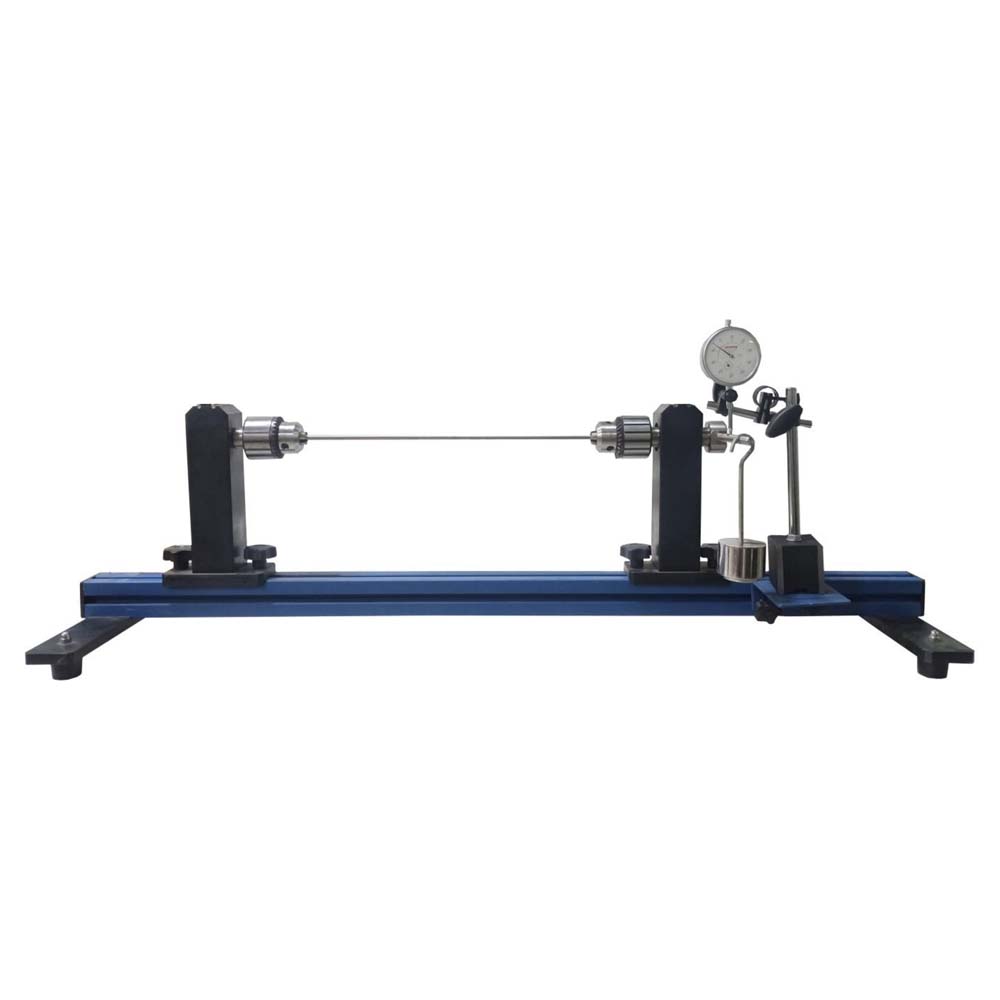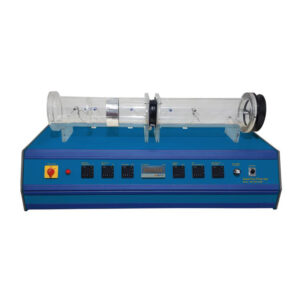Torsional vibration is angular vibration of an object commonly a shaft along its axis of rotation. Torsional vibration is often a concern in power transmission systems using rotating shafts or couplings where it can cause failures if not controlled. The unit Torsion of Bars enables the student to understand the rotary vibration torsion bars. The unit is basically a wall mounted base frame. Torsion bar is clamped in a chuck. The mass disc and the mass hanger are clamped to the torsion bar at its lower end using a chuck. Torsion is a typical loads to which components are subjected. The resultant stresses and deformations can lead to failure of the component. A number of different factors play a role in this, including the material, the cross-section of the bar, the clamping length and the method of bearing support. This apparatus investigates the influence of these factors on the twist of a bar under bending load or torque. A set of test bars has been assembled so as to permit direct comparison of measurement results. The bar under investigation is fixed to two movable support blocks and loaded down by a weight. A dial gauge records the resulting deformation. The support blocks include clamping chucks to hold the torsion bars and bearings for the bars in the bend test. The bearings offer a range of clamping options. The various elements of the experiment are clearly laid-out and housed securely in a storage system. The complete test setup is arranged on the frame. The well-structured instructional material sets out the fundamentals and provides a step – by-step guide through the experiments.
Experiments:
- Determination of the shear modulus of various materials.
- Angle of twist dependent on
* Clamping length
* Bar diameter - Formulation of proportional relationships for the angle of twist.




